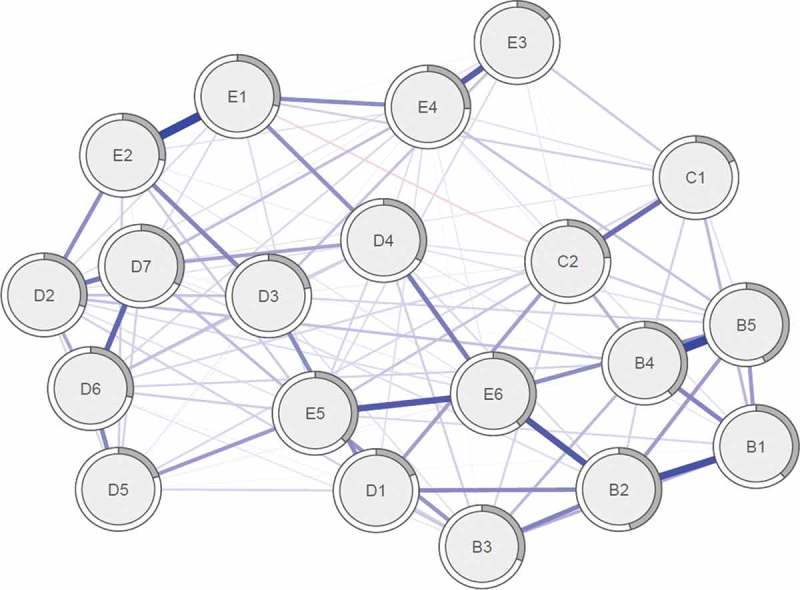Figure 1.

Estimated regularized partial correlation network of the 20 DSM-5 PTSD symptoms (n = 419). The thickness and saturation of an edge are an indicator for the strength of the associations between symptoms. The grey area in the rings around the nodes depicts predictability; the variance of a given node explained by all its neighbours. B1 = ”Intrusive thoughts or memories”; B2 = ‘Nightmares’; B3 = ‘Flashbacks’; B4 = ‘Psychological reactivity’; B5 = ‘Psychological reactivity’; C1 = ‘Avoidance of internal reminders’; C2 = ‘Avoidance of external reminders’; D1 = ‘Amnesia’; D2 = ‘Negative trauma-related cognitions’; D3 = ‘Distorted blame’; D4 = ‘Persistent negative emotional state’; D5 = ‘Diminished interest in activities’; D6 = ‘Detachment from others’; D7 = ‘Restricted affect’; E1 = ‘Irritability/Anger’; E2 = ‘Self-destructive or reckless behaviour’; E3 = ‘Hypervigilance’; E4 = ‘Startle Response’; E5 = ‘Concentration problems’; E6 = ‘Sleep disturbance’. Maximum edge value = .43.
